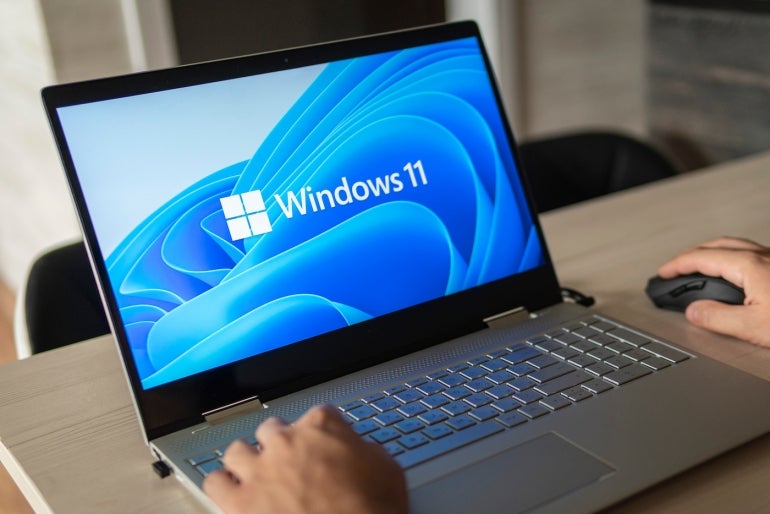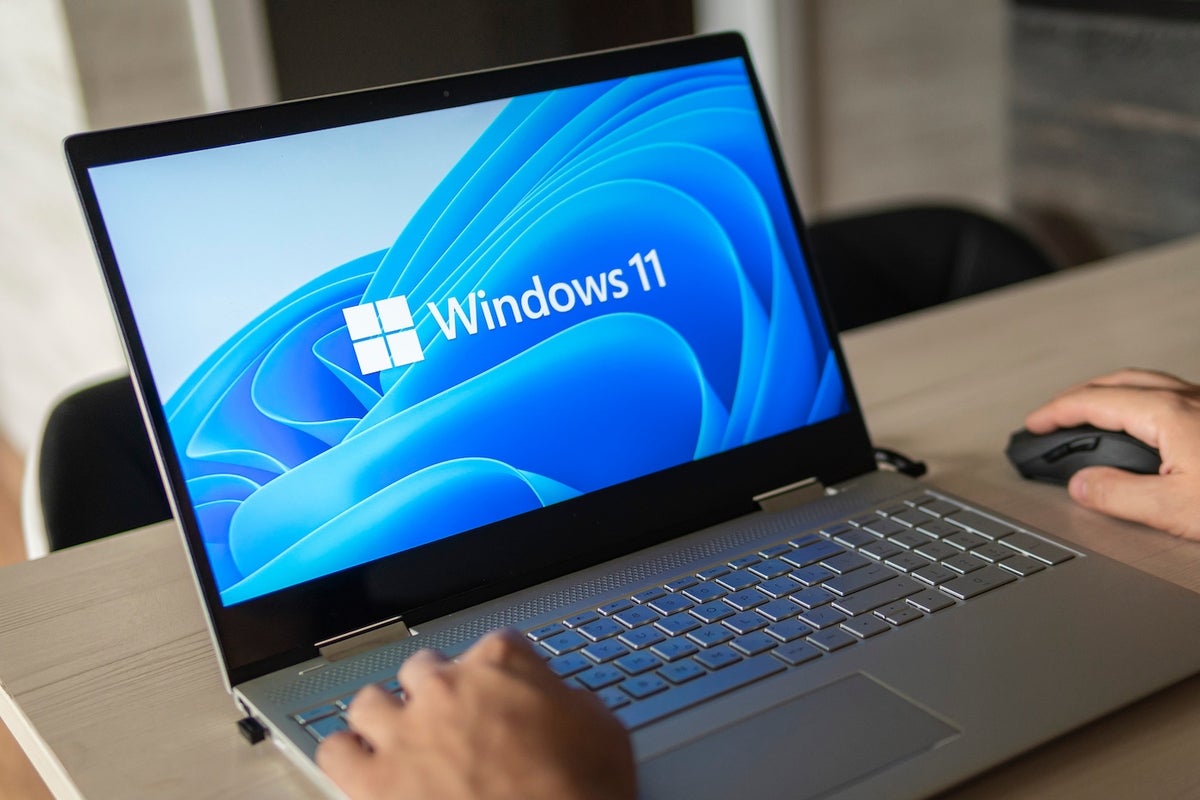
The first major update to Windows 11, Windows 11 version 22H2, also known as the Windows 11 2022 Update, is now available for eligible devices running Windows 10 or Windows 11.
The new features cover “everything from making the device easier, certainly more productive, solving growing needs around communications, creativity, as well as some of the security features that customers require,” said Windows VP Aaron Woodman.
SEE: Google Workspace vs. Microsoft 365: A side-by-side analysis w/checklist (TechRepublic Premium)
These Windows 11 features range from letting you pick the Edge tab you want to see in a Snap layout and being able to use Android apps on your PC in countries outside the U.S. to automatic captioning for any audio you record or play and Microsoft Defender SmartScreen, which warns you if you’re typing your Microsoft account details into a malicious site.
More Windows 11 features will be released next month
After 22H2, Windows 11 will have ongoing annual releases, added VP for Windows servicing and delivery John Cable. This is something that’s been happening fairly consistently since the release of Windows 10, even if the messaging and minor releases were rather disguised that at the time.
“Many folks are used to that and that will continue,” Cable confirmed. “That will mean a release in the second half of each calendar year.”
These annual releases will be the point that the 36 months of support for Enterprise and Education editions — 24 months for Home, Pro, Pro for Workstations, and Pro Education editions — is measured from: Something Microsoft refers to as “lifecycle attach”.
Even more features during Patch Tuesday updates
But Windows 11 22H2 isn’t the only feature update coming this year. If there are new features that are ready to ship, they’ll come out as part of the Patch Tuesday updates in a way that enterprise and education IT teams can control.
The “controlled feature rollout” process Microsoft is using for releasing new features outside the annual update is much like the Windows Insider program and uses the same quality checks and optional releases as the monthly patches from Windows Update, where you can choose to get a preview of the next month’s non-security patches on the fourth Tuesday of the month, which will now include any new Windows features.
“We’ve been using it on the Insider program,” Cable said. “We’ve been using it on Edge, and it’s very similar to the intelligent rollout technology we’ve used for feature updates for Windows 10 in the past where we monitor data and make sure that we’re only rolling something out at scale when the telemetry looks green.”
Cable calls it a “phased and measured approach” that starts with the users who deliberately download the preview updates on the fourth Tuesday to test if there are problems.
“Only once the data looks great for these features will we start a gradual rollout,” Cable continued. “These features will be enabled by default in the subsequent month’s security update.”
Enterprise teams can choose when to enable new features
The features that come outside the annual release won’t get turned on automatically for everyone, though: While the features will still be installed for enterprise and education users, they won’t be enabled in Windows unless IT teams use their usual processes, whether that’s MDM like Intune or group policy. The monthly updates will have their own build numbers and Knowledge Base codes to make it easy to target them in scripts and policies.
“These large customers typically manage vast estates and have planning needs as they manage their large and complex estate,” Cable said. “Our message for them is essentially keep calm and carry on. Technical implementers within these organizations that manage these estates can easily enable them via known tools and processes.”
If you have adventurous users who find out a way to enable features from a monthly update on their own, that will also be auditable so you can keep track of what’s on company PCs.
“Let’s go ahead and make it easy for an enterprise to opt in, but let’s not put them in a defensive position where they’re running around trying to turn things off,” Cable added.
Similarly, while the 22H2 update will have ways of highlighting new applications like ClipChamp and the Voice Assist voice control feature, in Start or through notifications, Cable says enterprise users won’t get those:
“Enterprise customers are in control. We’re not just going to show up with disruptive features or apps on those machines. We want to give control to the enterprise customers so they can manage it.”
Feature drops in October instead of the next annual update
This is intended to give IT teams the confidence to deploy Windows 11 without worrying that it will mess up their planning, while allowing Microsoft to release features customers are asking for:
- Tabs in File Explorer
- A new interface in the Photos app
- Adding nearby PCs to the Share options
- Being able to make a phone call or create an events when you copy a phone number or date
All will be in the October update as soon as they’re ready, rather than waiting for the next annual update.
These are features that won’t reach the quality bar Microsoft looks for in time to be part of the 22H2 update in September, but they should be ready by October, Woodman predicted. That way, customers don’t have to wait an extra year, and the Windows team isn’t tempted to rush a feature to make an arbitrary deadline. That might make it easier for Microsoft to ship the annual Windows update on a more predictable date too.
While enterprises like the predictability of an annual release, that doesn’t mean they always want to wait a year for something useful, Woodman noted.
“One of the things we’ve heard from customers about the annual release is if there are certain features they’re asking for, and from a quality perspective, we just can’t make the September release date, the question to us is do we wait for the next release a year later?”
Enterprise customers want to get new features — they just want to make sure they don’t disrupt the way they manage PCs, Woodman noted.
“Our intention here is bringing customers the most impactful experiences as quickly as humanly possible,” he said. “Our intention is to give more value faster.”
That doesn’t mean there will be new features every month, or that they will be features as significant as the ones in the annual update: They’ll come when they’re ready and when they’re useful.
“We just want to make sure that every day users turn on the PC, they have the best, most secure experience that they possibly can,” Woodman said.
No new specs stand in the way of Windows 11 upgrades
If you have Windows 10, you can upgrade straight to Windows 11 22H2 for free. Some of the Microsoft documentation about that might have been confusing, Woodman noted, but the free upgrade doesn’t have a specific end date, though the end-of-support date for Windows 10 remains Oct. 14, 2025.
There are no changes to system requirements for Windows 11 22H2, but Microsoft also isn’t blocking users who want to upgrade a PC that isn’t technically supported to Windows 11, although Cable emphasises that means you won’t get any support from Microsoft if you have problems.
“It’s flattering for us to see that we have a lot of real fans out there that are willing to take extra steps,” he noted. “It’s definitely not something that we would encourage, but at this point we’re not taking active steps to prevent it because it’s not an at-scale phenomenon.”
If you’ve heard rumours about a three-year release cycle for Windows, they’re not coming from the Windows team. Expect annual releases for the foreseeable future. And while Windows 10 turned out not to be the final version of Windows it was initially billed as, Microsoft tells us it currently has no plans for a Windows 12 to replace Windows 11.
